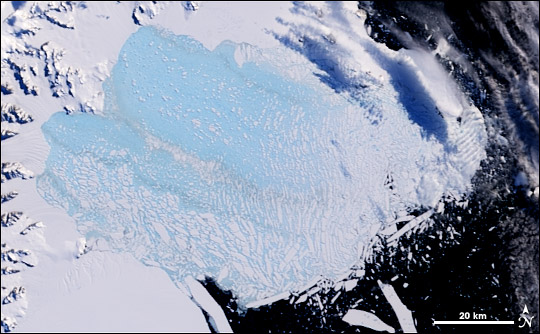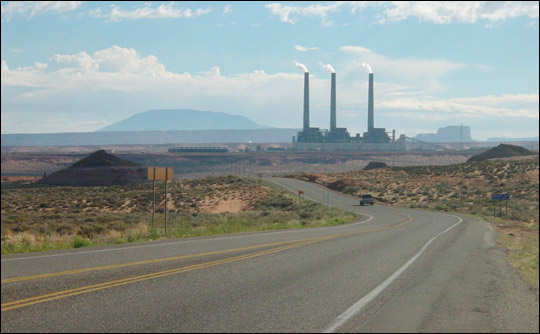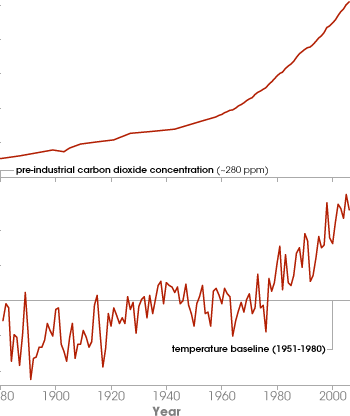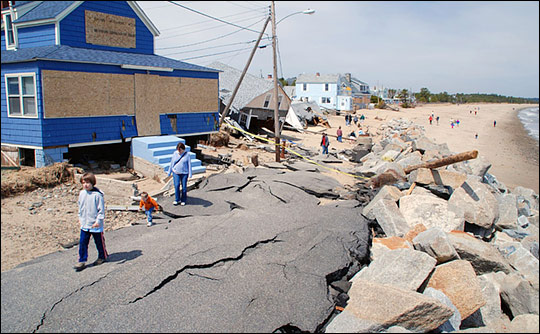
 |
||
|
|
||
The original version of this fact sheet, published in 2002 and written by John Weier, is archived as a PDF. Over the last five years, 600 scientists from the Intergovernmental Panel on Climate Change sifted through thousands of studies about global warming published in forums ranging from scientific journals to industry publications and distilled the world’s accumulated knowledge into this conclusion: “Warming of the climate system is unequivocal.” |
|||
 |
|||
Far from being some future fear, global warming is happening now, and scientists have evidence that humans are to blame. For decades, cars and factories have spewed billions of tons of greenhouse gases into the atmosphere, and these gases caused temperatures to rise between 0.6°C and 0.9°C (1.08°F to 1.62°F) over the past century. The rate of warming in the last 50 years was double the rate observed over the last 100 years. Temperatures are certain to go up further. |
The effects of global warming are already being felt worldwide. The Larsen-B Ice Shelf on the Antarctic Peninsula collapsed over 35 days in early 2002, prompted by 3°C of warming since the 1940s. (NASA image by Jesse Allen, based on MODIS data.) | ||
 |
|||
 |

But why should we worry about a seemingly small increase in temperature? It turns out that the global average temperature is quite stable over long periods of time, and small changes in that temperature correspond to enormous changes in the environment. For example, during the last ice age, when ice sheets a mile thick covered North America all the way down to the northern states, the world was only 9 to 15 degrees Fahrenheit colder than today. Much of modern human civilization owes its existence to the stability in the average global temperature since the end of the last ice age—a stability that allowed human cultures to transition from roaming, hunter-gatherer societies into more permanent, agriculture-supported communities. Even the temperature change of a degree or two that has occurred over the last century is capable of producing significant changes in our environment and way of life. |
Cars, factories, and power plants pump billions of tons of carbon dioxide into the atmosphere every year. Since 1750, carbon dioxide levels have increased 35 percent, while temperatures have gone up between 0.6°C and 0.9°C. Scientists have very high confidence that increased concentrations of greenhouse gases are causing the planet to warm. (Photograph ©2002 Travel Geographer. NASA graphs by Robert Simmon, based on carbon dioxide data from Dr. Pieter Tans, NOAA/ESRL and temperature data from NASA Goddard Institute for Space Studies.) | |
 | |||
In the future, it is very likely that rising temperatures will lead to more frequent heat waves, and virtually certain that the seas will rise, which could leave low-lying nations awash in seawater. Warmer temperatures will alter weather patterns, making it likely that there will be more intense droughts and more intense rain events. Moreover, global warming will last thousands of years. To gain an understanding of how global warming might impact humanity, it is necessary to understand what global warming is, how scientists measure it, and how forecasts for the future are made. |
One inevitable consequence of global warming is sea-level rise. In the face of higher sea levels and more intense storms, coastal communities face greater risk of rapid beach erosion and damage from destructive storms like the intense nor’easter of April 2007. (Photograph ©2007 metimbers2000.) | ||
|
Subscribe to the Earth Observatory About the Earth Observatory Contact Us Privacy Policy and Important Notices Responsible NASA Official: Lorraine A. Remer Webmaster: Goran Halusa We're a part of the Science Mission Directorate |
|
|